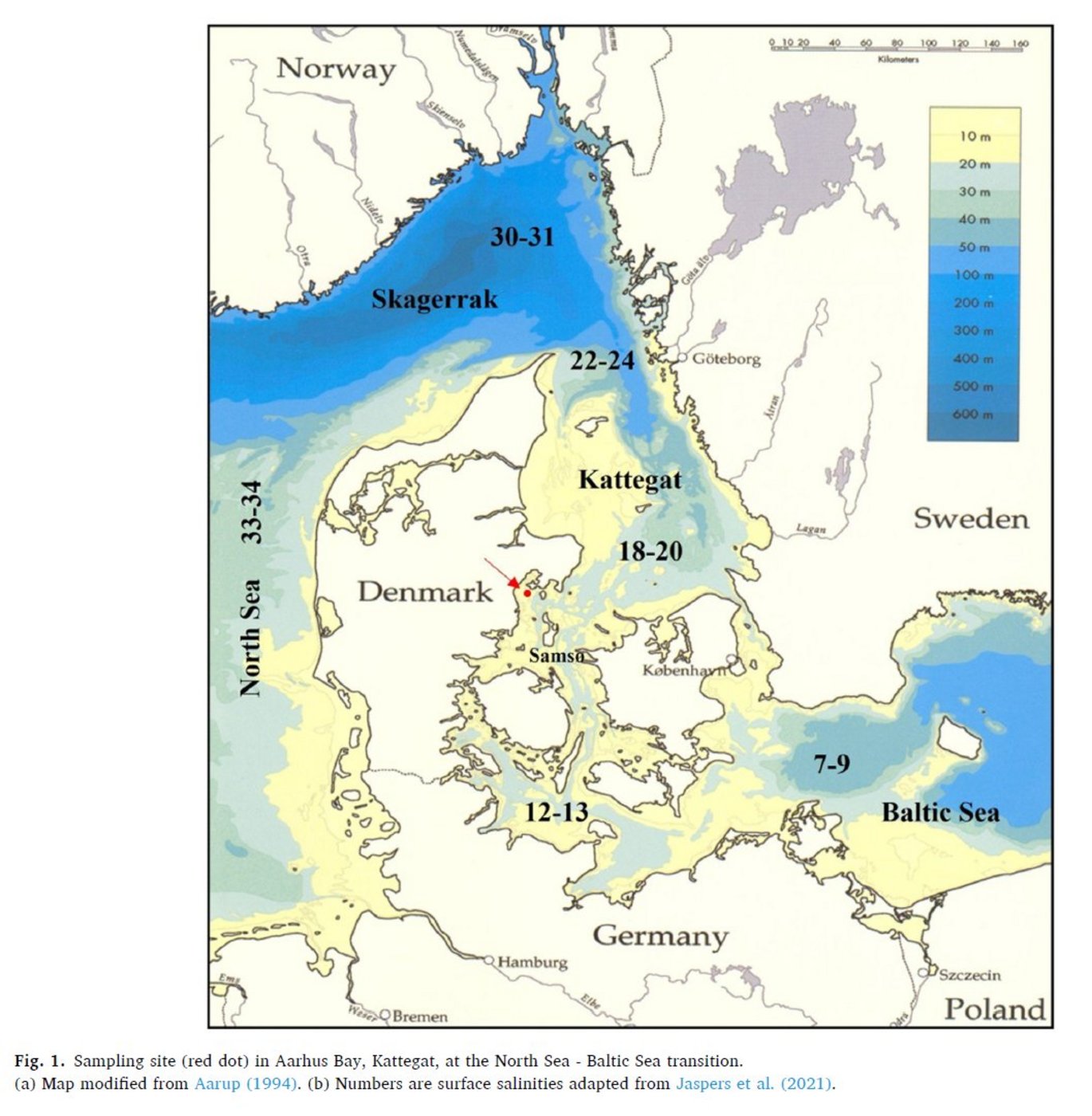A 30-year (1992-2021) time-series of Kd(PAR) at the North Sea - Baltic Sea transitional zone - trends in light attenuation and Chlorophyll a Author links open overlay panel
New publication by Lars Chresten Lund-Hansen

Abstract:
Light attenuation is of fundamental importance for photosynthesis in marine and freshwater environments and quantified as Kd(PAR). A 30-year (1992–2021) long time-series of Kd(PAR) (n = 945) from Aarhus Bay, at the North Sea - Baltic Sea transition obtained with 1–5 measurements per month is analyzed. The time-series showed a weak but not statistically significant positive trend with an average Kd(PAR) of 0.30 ± 0.08 m 1. Monthly based time-series of Kd(PAR) showed, in comparison, significant differences with average maximum values in March of 0.38 ± 0.09 m 1 compared to a minimum in June of 0.26 ± 0.03 m 1. There were statistically significant positive Kd(PAR) trends in April and December and a negative trend in October. Accordingly, the depth limit of eelgrass and macroalgae decreased from 8 to 5 m in April. The strong variability in Kd(PAR) in February and March related to the phytoplankton spring bloom in Aarhus Bay both in timing and strength, given the strong and significant correlation between Chl a and Kd(PAR). Partitioning showed that non-Chl a attenuation related to CDOM and suspended matter increased from 0.20 m 1 to 0.29 m 1 between 1992 and 2007 but was constant from then on. The Chl a specific attenuation coefficient varied around an average of 0.019 ± 0.008 m2 (mg Chl a) 1 and showed only small variations over time. The frequency of CTD casts and light measurements decreased between 1992 (n = 52 per year) and 2022 (n = 15 per year) but no parallel trends in average Kd(PAR) were observed. No significant trend (1992–2021) in annual average Chl a concentrations in Aarhus Bay was detected. The importance of high-resolution measurements in time are emphasized and at least monthly to track the strong seasonal variation.
